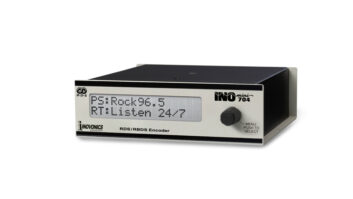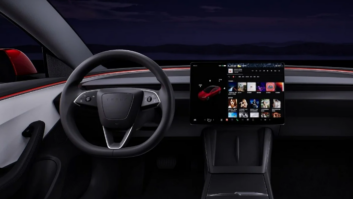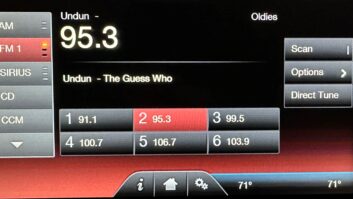Realizing that roughly 75 percent of new cars sold are equipped with RDS-capable radios, groups like Entercom, Clear Channel, Greater Media and others have been installing encoders to add song title and artist text scrolling. Many are using the PS display, originally intended for static call letter and logo identification.
The primary impetus to revive RDS can be attributed in large part to the use of text messaging on the competing satellite services. And with song title and artist information easily harnessed from a station’s digital storage or automation system, it’s there for the taking.
More FM stations should add this service. There’s no need to let the sat boys reap the advantage or to wait for HD Radio.
Even though the song title and artist text display has proven successful here, some car radio manufacturers look to the European RDS model and, privately, take a dim view of placing it on the PS display. Too much liability, they say. Drivers would be distracted by watching scrolling or changing text. Perhaps accidents – and lawsuits – are waiting. This school of thought argues that the feature belongs in the RT or radio text display, the second-level, user-selectable function on most RDS radios.
However, the function is not available on radios that offer only a PS display. Further, radio text often is too confusing to engage; and most car owners are unaware of it. Broadcasters pressed the PS display into action when they realized the RT function that scrolls program-associated text would largely go unnoticed.
The original U.S. RDS standard assumed the PS data would remain static when the standard was developed 11 years ago. Receivers react differently to scrolling text.
Now, a subcommittee of the NRSC is trying to dedicate a code in the RDS standard to PS scrolling data; it would be similar to a template that receiver makers could use.
According to broadcast engineering sources, at least one automaker is so concerned about distractions on the dashboard, it is considering turning off the RDS PS display – or dropping RDS altogether if stations attempt to send any form of changing text messaging through it. A few other car radio companies appear to have some sympathy with this position.
Yet these companies are not proposing discontinuing the feature in satellite radios.
Let’s be reasonable about how “busy” the car dashboard has become. Many indicators apart from the radio – text-based and otherwise – feature information updated constantly, such as GPS navigation screens and status indicators of on-board systems and accessories. Drivers have acclimated by employing “quick-glancing” techniques to pick up ever-changing messages on the dashboard, while concentrating primarily on driving their vehicle safely and responsibly. Seeing radio text is no different.
By using the RDS PS display creatively but responsibly, existing analog radio can achieve at least some parity with satellite services, and soon HD Radio, in the arena of text messaging. Car radio manufacturers should either apply the safety argument to all cabin distractions, or resist penalizing RDS PS text scrolling in the face of so many other moving messages on the dashboard.
– RW












